Chengdu is the most preferred gateway city to Tibet and traveling by train is the best transportation to view the landscape on the way. This tour gives you an opportunity to feast your eyes leisurely. You will spend one day in Chengdu to visit pandas and Chengdu City before heading to Lhasa by train. On this train tour, you will pass the sparsely populated Kekexili Nature reserve in Qinghai-Tibet Plateau; see wild animals through the train window; and enjoy the breathtaking natural beauty of Plateau lakes and snow-covered mountains along the train line.
Important News: the latest departure time of the train to Lhasa (Z322) has been updated. On every other day, Z322 leaves Chengdu Railway Station at 21:37 and arrives in Lhasa at 09:55 on the third morning, with a total duration of 36hrs 18 mins. Please plan your trip accordingly.
Highlights of this tour:
- Experience the relaxing lifestyle of Chengdu and have a close contact with the adorable giant panda;
- Glut yourself with the various spectacular scenery from plain to plateau on the train;
- Set your foot on the holy land of Lhasa and explore the Buddhist culture by visiting grandiose Potala Palace and sacred Buddhist monasteries.
Tour Brief Information
- Tour price: from Request
- Tour code: TD-CLT-07
- Tour Type: Private Customizable Tour Package
- Destination: Chengdu / Lhasa
- Duration: 7 days and 6 nights
- Departure: Flexible
- Travel Theme:





- Best Time:




- Physical Level
- Tour Pace
- Max Altitude
5,068m
- Itinerary Details
- Price Guide & Booking
- Trip FAQs
- Reviews
- Make an Enquiry
Your tour - at a glance
Day 1~2 Arrival & Chengdu Tour & Train to Lhasa
Day 3 Train Tour
Day 4~6 Lhasa Arrival & Lhasa City Tour
Day 7 Lhasa Departure
Itinerary Details - Day by Day
Day 1 Chengdu Arrival
Welcome to the hometown of Giant Panda! Upon arriving at the airport/train station, you will be met by your local tour guide, and then drive to your downtown hotel in Chengdu City. After the hotel check-in, you are free to take a rest or explore around on your own.
Optional Activity: go to enjoy an authentic Sichuan Cuisine dinner at a local restaurant.
-
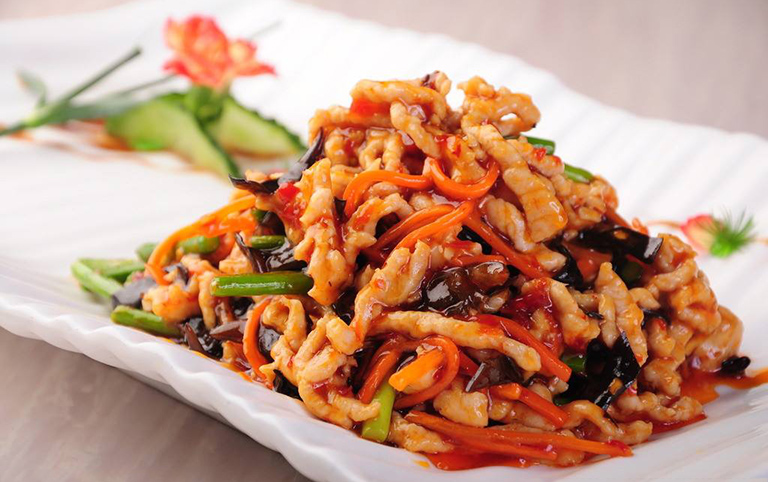 Shredded Pork with Garlic Sauce
Shredded Pork with Garlic Sauce
Day 2 Chengdu Tour & Train to Lhasa ( B, L )
Chengdu has three famous features – Giant Panda, History and Leisure Living Pace. Today, you will go to explore these tree features one by one. First is to visit the lovely Giant Pandas in Chengdu Research Base of Giant Panda Breeding, which is the No. 1 thing to do in Chengdu. You will leave your hotel early and drive about 30 minutes to the panda base so that you can catch up the great moments of pandas, such as feeding, playing, climbing tree, etc. There are different enclosures for pages of different ages, such as all around to see baby pandas, 1 year-old pandas, teenage pandas, and older pandas. Beautiful walking paths will lead you to visit the enclosures from one to next. Enjoy the happy time with pandas.
The second place to visit is the sacred Wenshu Temple which is hidden peacefully among the modern mansions. This temple is the most popular Buddhist temple in Chengdu region. It has beautiful traditional ancient architecture. The atmosphere is calm and quiet, some people are praying. There is a little garden and the monastery is very colorful and decorated. After Wenshu Temple, you are going to explore the leisure living peace of locals at Renmin Park and Jinli Street. Renmin Park, or People’s Park is the place for locals to go for a relaxing walk, meet friends, or have a cup of tea. While Jinli is the “street of tourists”. You can wander on the traditional old street to absorb the special atmosphere of Chengdu, taste local snacks, watching a performance, etc.
Lastly, you will be transferred to board your train to Lhasa which will departure around 9:00 at night, and take you to travel totally 3,600 km, via northwestern China - Lanzhou, Xining, crossing Qinghai Tibet Plateau, and arrive at Lhasa in the morning of the third day. Though a long journey, but you will see and experience a lot - the world's highest altitude railway, enjoying the endless snow-capped mountains outside and the windows and witnessing the wild life on the Tibet Plateau...
Tips of today: 1. You'd better get to railway station about 45 minutes ahead of departure time. Ticket Check-in starts 30 minutes before your aboard; 2. Prepare some foods for the long train journey.
-
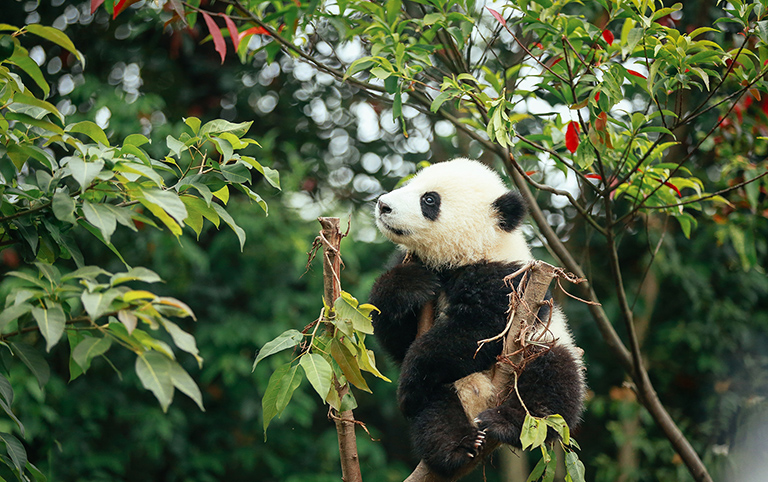 This giant panda seems thinking something deeply
This giant panda seems thinking something deeply
-
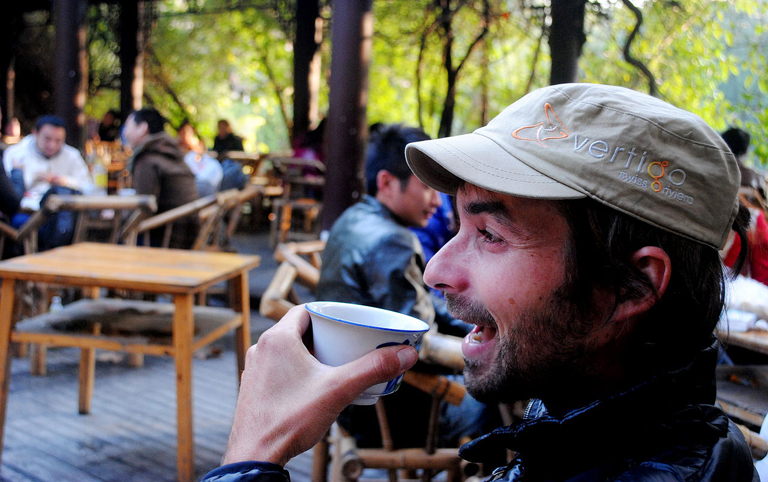 Drink a cup of tea in Renmin Park
Drink a cup of tea in Renmin Park
-
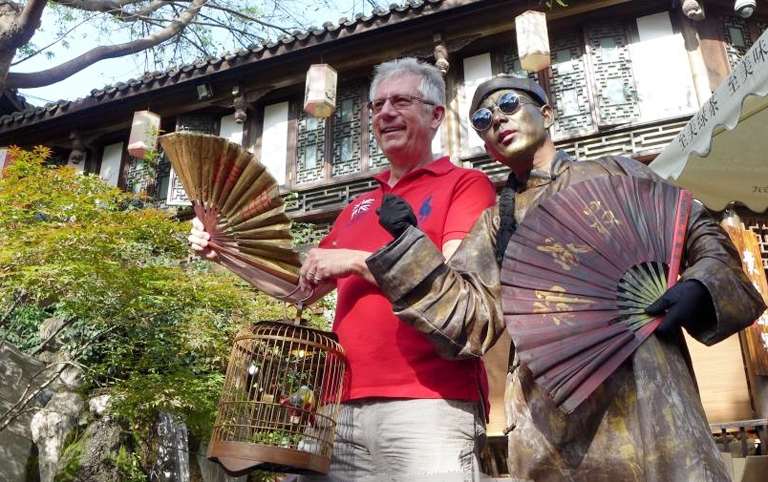 Take a photo with the "Bronze Man'
Take a photo with the "Bronze Man'
Day 3 Train Travel
Today, you'll travel on the world's highest altitude railway: Qinghai-Tibet railway. While traveling to Tibet by train takes much longer time than by plane, but you will witness thousands of miles of the most stunning plateau landscapes in the world, rolling by outside your window.
Tips of today: 1. There are battey charging accesses on the train, but make sure you have a socket adapter; 2. Only Chinese foods are served aboard, including Breakfast, Box Lunch, Self-selected Meal.
-
 You will have a unforgettable journey with Qinghai-Lhasa Railway
You will have a unforgettable journey with Qinghai-Lhasa Railway
Day 4 Lhasa Arrival
Waking up in the morning on the train, you will find the train is speeding on the vast Nagchu Grassland and heading to Lhasa. From Nagchu, you will take about 4 hours to arrive at the final stop of this long train journey - Lhasa, the capital of Tibet.
After arrival at Lhasa Railway Station in the morning, your local tour guide will be waiting for you and escort you to your hotel in Lhasa. The rest of the day is free for you to explore the local areas and acclimatize yourself to the air, temperature and high altitude of Lhasa.
High Altitude Acclimation Tips:1) go for some leisure walking to acclimate the high altitude but avoid strenuous activity after arrival; 2) you'd better not have bath, in case of catching a cold; 3) drink more water, and have some fruit; 4) have a good rest.
-
 The clean Tsonag Lake along Qinghai-Tibet Railway
The clean Tsonag Lake along Qinghai-Tibet Railway
Day 5 Lhasa ( B )
Start today’s Lhasa exploration with an exciting visit to the landmark - Potala Palace which is regarded as one of the most beautiful architectural building in the world. You will climb up the palace along the zigzag stone paths with white-and-red walls to the top of the palace where you can not only appreciate the exotic Tibetan-style architecture, but also get a great view of Lhasa’s urban areas, then walk into the inner space of Potala Palace to explore the stately chapels and learn about the history of the palace.
Continuing your exploration, you will then get to Jokhang Temple which is considered as the spiritual heart of Tibetan Buddhism. Each day, there are thousands of pilgrims coming from different places in Tibet to the temple to worship to the Buddha. This temple is also known as the “house of Buddha” because it keeps the precious Jowo Rinpoche, the life-sized (5 foot/1.5m) image of the Shakyamuni at the age of 12. The last site for today’s exploration is the famous Barkor Street. It is a circular and wide street encircling the Jokhang Temple. The local people like to walk on the street for several circles usually in the late afternoon as a daily tradition of pilgrimage. The street also has many shops selling a wide variety of traditional Tibetan goods, religious items and handcrafts.
Tips of today: 1) there are 1,080 steps up to climb to the top of Potala Palace, so don’t walk in a rush, which may cause high altitude sickness; 2) taking photos is not allowed inside the palace; 3) today you will be mainly outside, please bring some water, a hat, sun cream, and sun glasses with you.
-
 Towering Picturesque is the holy center of Tibet
Towering Picturesque is the holy center of Tibet
-
 Norbulingka Park is a good summer resort in Lhasa
Norbulingka Park is a good summer resort in Lhasa
-
 Golden Roof of Jokhang Temple
Golden Roof of Jokhang Temple
Day 6 Lhasa ( B )
After breakfast, you will firstly go to visit the beautiful Norbulingka which used to be the former summer palace of Dalai Lamas in the ancient time, and now is a public park. It is famous for its Potrang, the private palaces of former Dalai lamas with grandiose Tibetan architecture style. Next, drive several kilometers to the western outskirts of Lhasa to visit Drepung Monastery. Drepung, in Tibetan, means “prosperity”. Since its establishment, Drepung Monastery has always been one of the most important Buddhist monasteries in Tibet. In its heyday, there were more than 10,000 monks lived and studied in the monastery. Throughout its history, many important and famous Tibetan leaders used to study here, especially the Dalai Lamas. So Drepung Monastery is also respectfully known as the “Mother School of Dalai Lamas”.
In the afternoon, you will be taken to another famous monastery in Lhasa - Sera Monastery. It is famous for the spectacular “Buddhism Debating”. As a daily routine, the monks gather in a courtyard, and debate on the Buddhist doctrines with supplemented gestures, which is thought to be helpful to facilitates better comprehension of the Buddhist philosophy to attain higher levels of study. After enjoying the "Buddhism Debating", you will be transferred back to the city. The rest time is your own free time to rest.
The Etiquette of Visiting Monastery: 1) you shouldn’t wear short and uncover shoulders; 2) taking off your sunglasses and hat before entering the chapels; 3) taking photos is usually not allowed inside the chapels.
-
 Enjoy the scripture debate in the Sera Monastery
Enjoy the scripture debate in the Sera Monastery
-
 Monks Gathered at the Entrance of Drepung Monastery
Monks Gathered at the Entrance of Drepung Monastery
-
 Enjoy the bright flowers in Norblingka
Enjoy the bright flowers in Norblingka
Day 7 Lhasa Departure ( B )
Today is free for you until your tour guide transfer you to the airport in time for your flight or drop you off at Lhasa train station.
Tips of Today: 1) please pack your luggage carefully, especially for small things like camera charger, power adaptor, mobile phone, phone charger, wallet and towel; 2) if your flight is arranged in the afternoon, please make sure you check out the hotel before 12pm.
Useful Trip Notes
-
- 1. Tibet Permits Guaranteed
To travel in Tibet, all Non-Chinese passport holders need to have a Tibet Travel Permit which is issued by Tibet Tourism Bureau in Lhasa. And only Chinese travel agencies like Tibet Discovery can apply for the permit on behalf of tourists. You must obtain it before your tour starting because the permit will be checked when you board your flight/train to Tibet. Traveling with Tibet Discovery, you don't have to worry about the complicated procedures of Tibet Travel Permit application. All you have to do is to confirm a tour package with us and send us your passport and Chinese visa copies at least 15~20 days in advance before your tour, then we will take care of all the rest things. Once the permit is issued, we will deliver to your address in China, such as your hotel, local travel agency, etc.
-
- 2. Available Months to Visit Tibet
Generally speaking, April to October is the best time. July and August are the peak season and rainy season. It is usually snowy and cold in winter, which is not suitable for visit Mount Everest, Namtso and Mount Kailash regions. While other places such as Lhasa, Gyantse and Shigatse are suitable for travel all year around. The temperatures in daytime and night differs a lot, usually 5~15℃ in the daytime and -5~0℃ in the night, so please wear accordingly.
-
- 3. High Altitude Sickness
The average altitude of Tibet is about 4000 meters above the sea level (Lhasa: 3700m; EBC: 5200m; Namtso: 4718m). You may suffer a bit from High Altitude Sickness in the beginning days of your Tibet trip if you haven’t had rich high plateau travel experience. But don’t worry too much, the high altitude can be acclimatized usually in 2~3 days. Our suggestion is to take a physical examination and get suggestions from your doctor, and also bring some medicines to prevent from High Altitude Sickness before your trip. While in Tibet, you should keep warm all the time, avoid strenuous activities, drink more water and eat more vegetables and carbohydrates. You’d better not take showers during the first two days after your arrival in Tibet. If you don’t feel well, get help from your tour guide or go to the hospital without any delay.
-
- 4. How to Go to Tibet
Basically you have two options – flight and train. Currently, you can take a flight to Lhasa from Beijing(4.5hrs), Xian(3.7hrs), Chengdu(2.5hrs), Chongqing(3hrs), Kunming(3hrs), Kathmandu (1.5hrs), etc. Among all these cities, Chengdu and Xian have more frequent flights to Lhasa.
If you prefer a train travel, you can take a train to Tibet from Beijing(40.5hrs), Xian(32hrs), Chengdu(43hrs), Shanghai(47hrs), Chongqing(42hrs), Lanzhou(25hrs), Xining(22hrs), Guangzhou(54hrs). -
- 5. Packing and Wearing Ideas
Firstly you can’t forget your passport and Chinese Visa. A large backpack and a smaller one are recommended (the smaller one can be used for daily activities). Also bring necessary medicine you need. Other stuffs like sunglasses, snow glasses, hats, lip balm, sun block are recommended.
As for wearing, you are suggested to dress in layers (both thin and thick jackets). Down jacket is necessary in Spring and Autumn. A pair of durable and comfortable shoes is necessary.
Recommended Tibet Group Tour Packages
Escorted by a skilled driver and companied by a professional local tour guide to organize all the activities, all you have to do is to enjoy your fantastic Tibet journey.Following are some other recommended Tibet group tour packages that you may be interested in. You can also contact us to customize a trip if you want..
-

Chengdu / Lhasa
6 Days Classic Chengdu Lhasa Highlights Tour
Highlights: Panda Base, Wenshu Temple, Potala Palace, Sera Monastery
-

Chengdu / Lhasa / Lhasa / Shigatse / Gyantse / Mount Everest / Lhasa
10 Days Chengdu Lhasa Everest Overland Tour
Highlights: Panda Base, Potala Palace, Yamdrok Lake, Palcho Monastery Mt.Everest
-

Chengdu / Xining / Lhasa
10 Days Panda & Qinghai Tibet Railway Experience Tour
Highlights: Panda Base, Wenshu Temple, Potala Palace, Sera Monastery




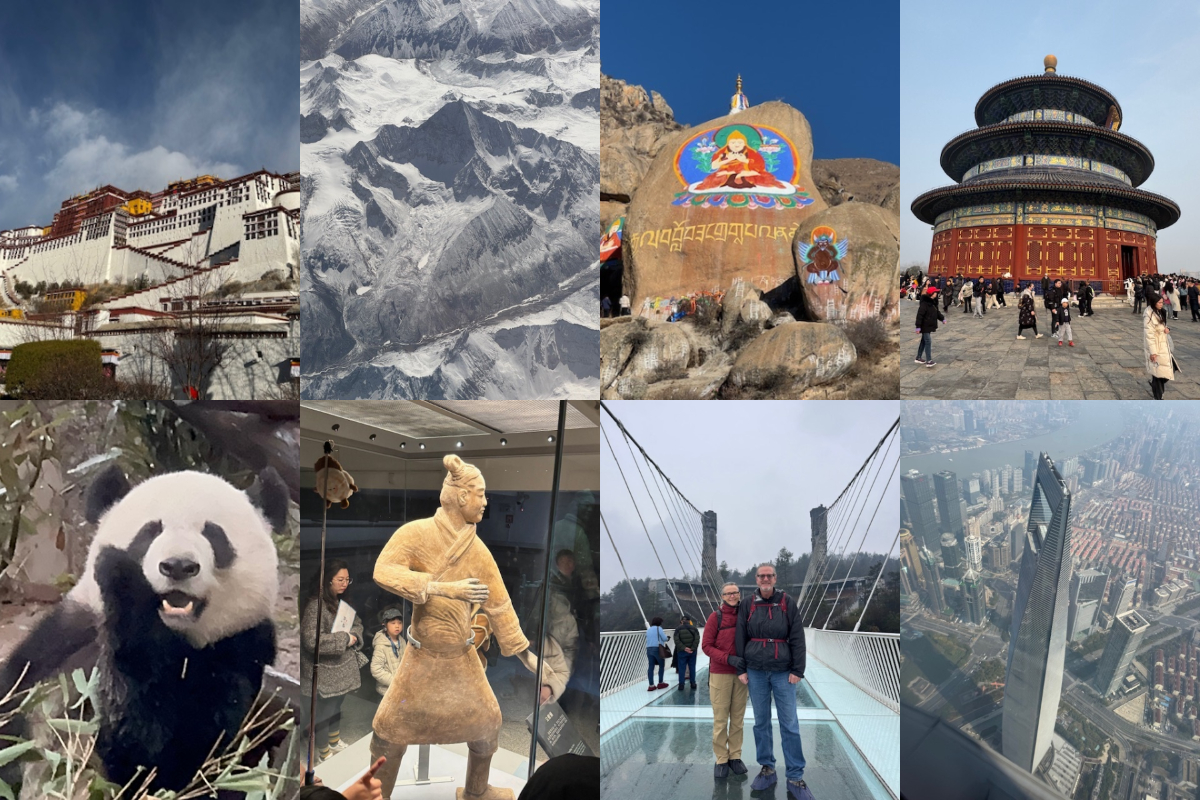


 Karen
Karen Wonder
Wonder Jack
Jack Rita
Rita Johnson
Johnson Vivien
Vivien Wing
Wing Ariel
Ariel Leo
Leo Tracy
Tracy Evelyn
Evelyn April
April Phoebe
Phoebe Kelly
Kelly Shirley
Shirley Reya
Reya Juliet
Juliet Elk
Elk Felix
Felix Sean
Sean